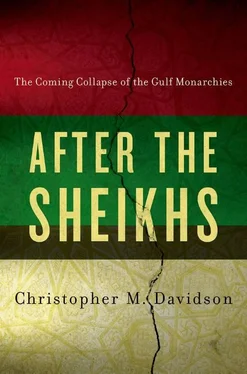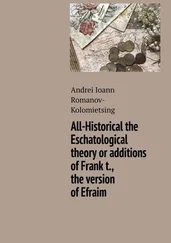Kuwait is in a much stronger position, with official estimates of 100 billion barrels of oil remaining, most of which will come from the massive Burgan field — the second largest in the world. However, some analysts and Kuwaiti members of parliament have disputed this figure, claiming Kuwait has only about 48 billion barrels remaining, while several of its other onshore fields are now nearly seventy years old and maintaining existing levels of production will become increasingly difficult. Since 2008 Kuwait’s consumption of gas has exceeded its production, requiring the emirate to import. This shortfall is likely to increase over the next few years, as domestic electricity demand is believed to be increasing by 8 per cent per year, having eliminated what was once a comfortable reserve margin. [474] 13. US Energy Information Administration 2011. Country overview on Kuwait.
In the best position of all is Qatar, which has a much smaller population and massive gas reserves which will likely allow it to keep exporting substantial quantities of gas for several more decades. As officials have claimed, Qatar could even ‘…meet all of the UK’s gas needs for 250 years’. [475] 14. Taken from the Qatargas official website, section entitled ‘Amazing Facts About Qatargas 2’.
Nonetheless the emirate will soon face pressures with regard to oil consumption, as it only has about 25 billion barrels of oil reserves — making it the second smallest OPEC oil producer. Since 2000 its domestic consumption of oil has tripled and is likely to rise by 5 per cent per year over the next decade due to its rapidly growing economy and in particular growing demand from its transport sector. [476] 15. US Energy Information Administration 2011. Country overview on Qatar.
In tandem with these declining reserves, and already placing pressure on the wealth distribution systems are the Gulf monarchies’ rapidly increasing indigenous populations. Although often overlooked, given the large size of their urban expatriate communities, the number of nationals in these states has also risen substantially in recent years. This is due to indigenous communities not only living longer, due to vastly improved healthcare, but also because of some of the highest fertility rates in the world, mostly due to the various economic benefits still on offer. Saudi Arabia has always had the highest ratio of nationals to expatriates in its total population, with the former accounting for about 70 per cent of the total, or 19 million persons, according to the 2010 census. [477] 16. Saudi Gazette , 24 November 2010.
Significantly, 47 per cent of Saudi nationals are now thought to be under the age of eighteen, with 80 per cent under the age of thirty, thus making the Saudi population one of the youngest in the world. [478] 17. See Nolan, Leigh, ‘Managing Reform? Saudi Arabia and the King’s Dilemma’ Brookings Doha Center Policy Briefing, May 2011.
An exact fertility rate is hard to measure for Saudi nationals — and for all Gulf nationals — due to most statistics being based on total resident populations (and thus being artificially lowered by the inclusion of the much lower expatriate fertility rates). [479] 18. A large proportion of expatriates working in the region are either single or have left their families in their home country.
Nonetheless it is likely that it is still much higher than in developed states, while life expectancies have become comparable with those in developed states. Similarly, the national populations of the other five Gulf monarchies also have very high growth rates, with modest or high fertility rates and greatly increased life expectancies. Although a recent UN report discussing the UAE claimed that the country’s birth rate has halved over the past thirty years and is now the lowest in the region, it erred by combining the national and expatriate populations. With the UAE having the highest ratio of expatriates to nationals in the region, this has obscured the fast growth of the indigenous population, which is likely growing just as fast as those of the other Gulf monarchies. [480] 19. Emirates 24/7 , 5 October 2010. Quoting ‘The World’s Women 2010 report’.
Symptomatic of the strain engendered by these declining reserves, increased domestic energy consumption, and rising populations have been the frequent failures of governments to maintain cheap utilities and keep delivering low cost fuel and foodstuffs. These have historically been three of the most basic types of subsidies in the Gulf monarchies and continue to be regarded as an indispensable birthright by most nationals, especially the younger generations who have no living memory of the pre-oil era and the region’s earlier poverty. They largely expect indefinite subsidies and, unlike their grandparents, rarely view them as gifts from rulers that have led to their lives being transformed. For expatriates, there are fewer political implications, yet it is undeniable that the Gulf monarchies must remain comparatively attractive and competitive places in which to live and work. With regards Saudi Arabia, a recent Brookings Center report argued that the ‘burgeoning youth population’ is now ‘straining the capacity of the Saudi welfare state… characteristics of other societies that have experienced political upheaval’. [481] 20. See Nolan, May 2011.
And in early 2011 a more specific BBC report claimed that Saudi Arabia was grappling with food price inflation of over 9 per cent, with some items such as beef, chicken, and vegetables having doubled in price over just a few years, presumably as a result of increased production and transport costs. [482] 21. BBC News, 6 February 2011.
In Kuwait, the most obvious problem has been the increasing frequency of rolling electricity blackouts during periods of peak demand, especially during the summer. This led the Energy Information Administration to conclude in 2011 that Kuwait is now in a ‘perpetual state of electricity supply shortage’. [483] 22. US Energy Information Administration 2011. Country overview on Kuwait.
The UAE offers even clearer examples, not least because it is usually perceived as a wealthy state. After several summers of blackouts in Sharjah, due to increased demand and its government’s inability to meet electricity costs, the Sharjah Electricity and Water Authority announced in 2009 that electricity charges were to be increased by 50 per cent — including those levied on UAE nationals. This led to much complaint, mainly from nationals, who claimed that the authorities were unable to cope with an expanding population. Since then blackouts have continued in the emirate, often forcing businesses to close due to lack of air-conditioning. [484] 23. Gulf News , 1 October 2009.
The Dubai and Abu Dhabi governments have also begun to falter, especially with regards to subsidising state-backed retail petrol companies such as the Emirates National Oil Company and the Emirates Petroleum Products Company (both owned by Dubai) and Emarat (owned by Abu Dhabi). In 2010 these companies’ roadside petrol stations began to experience fuel shortages — a situation that continued well into 2011. Initially the shortages were blamed on logistical problems, but it later transpired that deliveries were not being made due to the companies’ inability to make payments. Although fuel price hikes have taken place in recent years, most of which proved extremely unpopular with UAE nationals, there appeared to be no alternative as the various emirate-level governments had begun to phase out fuel subsidies on the grounds that they were costing the country hundreds of millions of dollars per year. [485] 24. The National , 7 June 2011.
Indeed, at a secret meeting with Ministry for Finance and Industry officials both ENOC and EPPCO recommended removing the cap on fuel prices completely, which would have led to an immediate tripling of petrol prices from nearly $2 per gallon to nearly $6 per gallon. In 2011, however, due to the perceived political backlash of further price hikes in the wake of the Arab Spring, and the rising popularity of various opposition groups in the UAE, the Abu Dhabi authorities performed a u-turn by providing Emarat with even more capital. Meanwhile the federal government cancelled the licences of both ENOC and EPPCO given the Dubai government’s inability to provide a comparable bailout, with the Abu Dhabi National Oil Company eventually taking over the running of their petrol stations. [486] 25. Gulf News , 5 July 2011.
Moreover, ministry officials even suggested introducing a new $550 fuel allowance specifically for UAE national families in order to cover future increases.
Читать дальше












